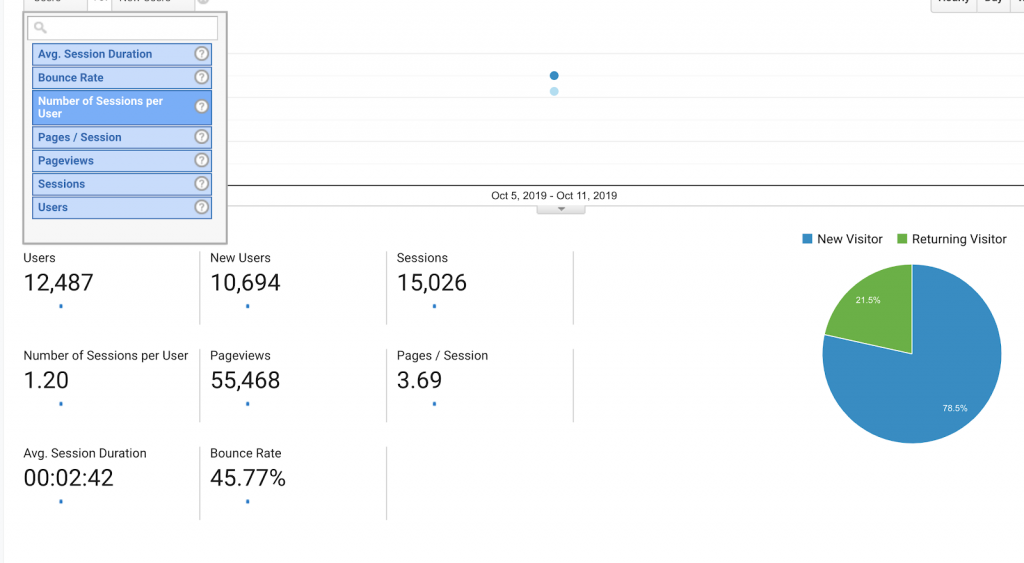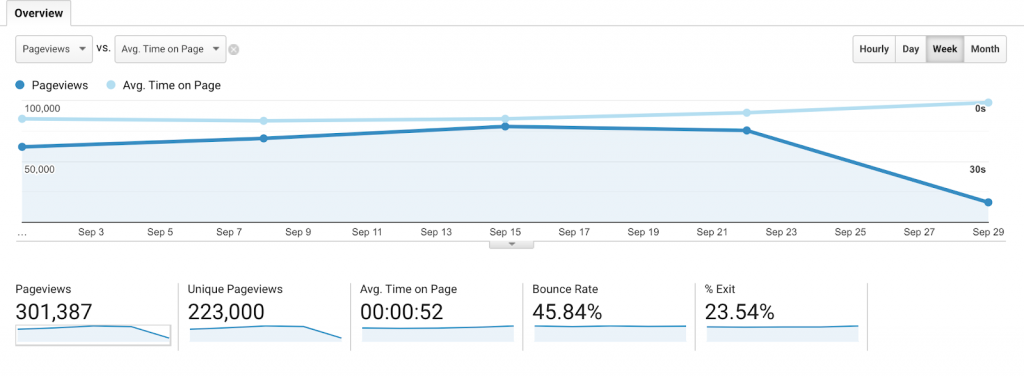blog»Marketing»Conversion Metrics – Metrics in Digital Marketing

Conversion Metrics – Metrics in Digital Marketing
2019/10/21
You can read this article in about 8 minutes
Conversion Metrics:
Conversion metrics help you keep track of visitors, leads, free users, and paid users. Converting your visitors into business leads or direct sales is the goal of many digital marketing efforts. Depending upon your marketing goal, whether it’s acquiring leads, gaining new customers or increasing brand awareness, conversion metrics will give you clear insight into whether you are achieving those goals.
Today we talk about conversion metrics including:
- New visitors VS returning visitors
- Conversion Rate (CVR)
- Average Session Duration
- Bounce Rate
- Cost Per Lead (CPL)
New visitors VS returning visitors
The new visitors vs returning visitors is the ratio among new visitors and those who have been to your site before.
Optimize your content to encourage visitors to visit your pages. Multiple visits can help you determine what kind of content is working. A large number of returning visitors will hint that your content is helpful. A large number of new visitors hints that your marketing efforts are working to attract new customers.

Comparing past reports on visitors with current reports on visitors will show you the effects of your marketing efforts. For example, if you have a blog with published content you can understand if more customers are coming than before.
Conversion Rate (CVR)
Conversion Rate is the percentage of people who did what you wanted them to. For example, what percentage of all visitors signed up for your service during the campaign? This is the most important metric for understanding a campaign’s success. A higher CVR means you are succeeding.

Under CVR metrics you can find out more detailed information about when your visitors are falling through or completing transactions. All digital analytics platforms come with a CVR dashboard displaying how many people converted with what method and how many people abandoned your site or cart or blog at what stage of your buyer’s journey.
Therefore, it is crucial to keep track of your CVR to know the overall performance of your digital marketing effort.
Average Session Duration
Average Session Duration is the average amount of time your visitors spend on your website. This metric helps you determine how well your website is optimized and engaging. A higher session duration means the customer gains more value from your website. These metrics let you know if users find your content relevant and if they are engaging in conversion or not.

If the number seems abnormally high, you may have to cross-check the average session duration with other metrics like the longest and shortest session durations. Sometimes a visitor’s browser may stay open on your website without any interaction, like when Josh leaves his computer open to go grab another cup of coffee.
Bounce Rate
A site’s bounce rate is the percentage of visitors that come and leave without viewing any other page. For example, if a visitor views a blog post on your site and immediately leaves without interacting with anything else, that is a bounce. A 40% or lower bounce rate is considered healthy for websites. If your bounce rate is over 60% you may need to be concerned about the overall health of your website.
Bounce rate can help you track:
- If your website is showing an error
- If your website’s content is irrelevant to the searches performed
- If visitors didn’t immediately find what they were looking for
- If the site is taking too long to load
Many factors affect the bounce rate of your website. Your contact us page and your landing page will have different bounce rates. The type of page and the different channels that lead traffic to your site will also affect bounce rates. Thus, tracking the bounce rate will help you figure as to why your visitors are not engaging with your website.
Cost Per Lead (CPL)
Cost Per Lead (CPL) is the average number of money you spend on a particular digital channel to acquire a lead (potential customer).
Everyone knows the importance of acquiring new leads. However, you also need to know how much money each lead costs in a given campaign. Luckily, digital analytics these days break the costs down to cents. Tracking the cost per lead will give you the exact amount of money spent to acquire your potential customer.
How much money you are spending to acquire leads matters a great deal to top-level management. Your digital campaigns should be able to justify the money spent on a particular campaign. This is reflected in the costs to acquire leads.
Cost Per Lead (CPL) is:
Total amount you spent on a campaign
Total lead acquired in that particular campaign
For example, if you spend $1000 on a campaign for your new product in the market, out of the total money spent, if you get 50 leads, then we can say that your CPL is $20 per lead that you are getting. Depending upon your company’s industry, the CPL standard will vary.